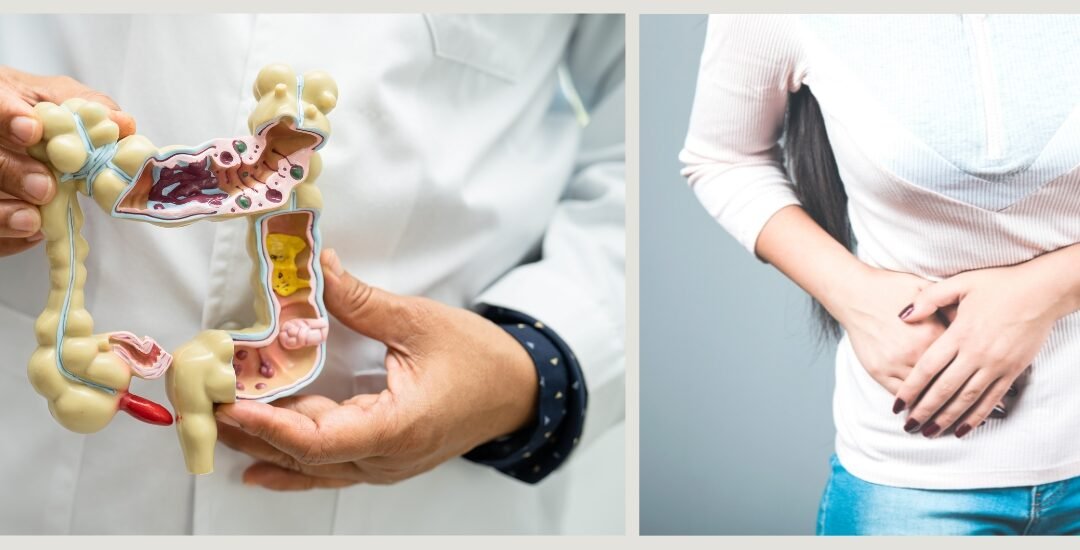When sharp abdominal pain strikes, one of the first questions that comes to mind is: what side is your appendix on? Knowing where the appendix is located—and what the pain feels like—can help you identify a potentially life-threatening issue like appendicitis early.
While a stomach ache can have many causes, appendix-related pain has very specific warning signs you shouldn’t ignore. In this guide, we’ll explain where your appendix is, how appendix pain feels, and when it’s time to seek medical care fast.
Table of Contents
- What Is the Appendix?
- What Side Is Your Appendix On?
- How Appendix Pain Starts and Progresses
- Key Symptoms of Appendicitis
- When to Seek Medical Care
- How Appendicitis Is Diagnosed
- Appendix Removal and Recovery
- Urgent Care for Abdominal Pain
- Call To Action
- Final Thoughts
1. What Is The Appendix?
The appendix is a small, tube-like organ that hangs off the first part of your large intestine. It has no clearly defined function, though researchers believe it may play a role in gut health and the immune system. Despite being largely unnecessary for digestion, the appendix can cause serious problems if it becomes inflamed or infected—a condition known as appendicitis.
2. What Side Is Your Appendix On?
Your appendix is located in the lower right side of your abdomen, just below your belly button and slightly above your right hip bone. Pain from the appendix typically starts near the center of your abdomen and shifts to this lower right quadrant as inflammation worsens.
If you’re feeling discomfort in this specific area—especially if it intensifies with movement, coughing, or touch—it could be a sign of appendicitis.
3. How Appendix Pain Starts And Progresses
Appendix pain usually begins as a dull, cramping discomfort around your navel. Within a few hours, the pain sharpens and moves to the lower right side of your abdomen. This progression is one of the hallmark signs of appendicitis.
The pain often becomes constant and may worsen when you walk, lie flat, or apply pressure to the area. It may also be accompanied by other gastrointestinal symptoms.
4. Key Symptoms Of Appendicitis
In addition to localized lower right abdominal pain, other symptoms of appendicitis can include:
- Nausea and vomiting
- Loss of appetite
- Fever and chills
- Abdominal swelling or bloating
- Constipation or diarrhea
- Pain that gets worse when moving or coughing
If you notice these symptoms together, especially with right-sided abdominal pain, seek care immediately—delaying treatment increases the risk of rupture.
5. When To Seek Medical Care
Appendicitis is considered a medical emergency. If you or a loved one experiences sudden, sharp pain in the lower right abdomen along with nausea, fever, or loss of appetite, don’t wait it out. A ruptured appendix can lead to a life-threatening infection called peritonitis.
Visit an urgent care center or emergency room as soon as symptoms appear. Timely intervention can prevent serious complications and reduce recovery time.
6. How Appendicitis Is Diagnosed
To confirm appendicitis, a healthcare provider will perform a physical exam, checking for tenderness in the lower right abdomen. You may also undergo:
- Blood tests to check for signs of infection
- Urine tests to rule out other causes of pain
- Imaging tests like an ultrasound or CT scan to visualize the appendix
Diagnosis is typically quick, as prompt treatment is essential to avoid complications.
7.Appendix Removal And Recovery
If appendicitis is confirmed, the most common treatment is appendectomy—a surgical removal of the appendix. This can be done through laparoscopic surgery, which involves smaller incisions and a faster recovery, or open surgery in more severe cases.
Most patients recover within a few weeks, though returning to normal activity may take longer after open surgery. Post-surgery care focuses on managing pain, preventing infection, and easing back into regular movement.
8. Urgent Care For Abdominal Pain
At Walk In PCP, we provide immediate evaluation for abdominal pain, including symptoms that may be linked to appendicitis. Our experienced providers can assess your condition quickly, order imaging or lab work if needed, and refer you to emergency care if surgery is necessary.
No appointment is needed—just walk in and get the attention you need when it matters most.
9. Call To Action
Experiencing pain in your lower right abdomen? Don’t take chances with your health. Visit a walk-in clinic near you for a fast, professional assessment. At Walk In PCP, we’re ready to help you identify serious conditions like appendicitis before they become emergencies.
10. Final Thoughts
Understanding what side your appendix is on can help you catch the signs of appendicitis early—and act quickly. Right-sided abdominal pain should never be ignored, especially when paired with fever, nausea, or appetite changes. With early detection and the right care, recovery is typically straightforward and safe.
Stay informed, trust your body’s signals, and don’t hesitate to seek help if something feels off.
Disclaimer
This blog is intended for informational purposes only and does not constitute medical advice. If you have persistent or severe abdominal pain, consult a qualified healthcare provider immediately.
